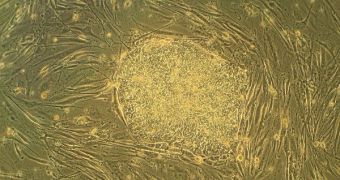In a find that could change the way lung diseases are being treated at this point, experts have managed to obtain fully functional lung cells from human embryonic stem cells for the first time ever. The Belgian science team that has been behind the new accomplishment was able to make them differentiate in a very convenient environment, a basic air-liquid interface. Chronic pulmonary diseases and inherited genetic conditions, including cystic fibrosis, could become a thing of the past from now on, as the new method will also make it a lot easier for lung transplants to be conducted, PhysOrg reports.
“Efforts will be made to further improve this novel culture protocol, trying to increase the number of differentiated cells or to guide the differentiation into particular cell types by adding certain growth factors to this system,” Free University of Brussels Department of Embryology and Genetics expert Lindsey Van Haute says. Details of the amazing, new work appear in the latest issue of the respected BioMed Central open-access journal Respiratory Research. The new study also showed that the differentiation process was not dependent on specific growth factors or other triggers, which is important.
Human embryonic stem cells (hESC) “have the capacity to differentiate in vivo and in vitro into cells from all three germ lineages, making them particularly important in developmental biology, regenerative medicine and in vitro pharmacological studies. hESC lines carrying a monogenic disease affecting the lung, such as cystic fibrosis, are available. This novel technique can be used on these affected hESC lines and provide researchers with putatively clinically relevant tools to develop in vitro models for these diseases,” the expert adds.
The scientists are convinced that the new differentiation process they've determined may be used in the near future to create epithelial-like cells in humans, which would be of tremendous importance in a number of conditions. The team reveals in the journal entry that the medium it used for the hESC was similar to the one found in the human trachea – a watery environment that is interfacing with air. According to the work, all major cell types of lung epithelial tissue were discovered at the differentiation site following the process.

 14 DAY TRIAL //
14 DAY TRIAL //